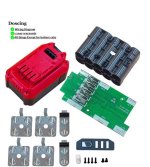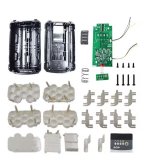YoshiMoshi
10 W
I'm building a power tool battery pack. I see lots of people online use some sort of padding and put it around their battery pack, then they heat Shrink the whole thing, put it in their hard plastic case, and add additional padding as necessary.
My question is what exactly is the function of the heat Shrink and what purpose does it serve? Would heat shrinking the whole thing and putting padding all around it just cause the pack to heat up even more?
I have seen people take power tool battery packs apart online. I don't think I've ever seen a manufacturer (DeWalt, Milwaukee, Craftsman...) put heat Shrink or padding around their pack. I'm wondering why? As it seems common place for battery packs in other applications. Is it because battery tool packs are very compact and limited in space, so there's just simply not the room for hear shrinking the whole pack or any type of padding?
I get the battery padding just helps absorb shock, but at the cost of hearing the cells up more?
Thanks for the help!
My question is what exactly is the function of the heat Shrink and what purpose does it serve? Would heat shrinking the whole thing and putting padding all around it just cause the pack to heat up even more?
I have seen people take power tool battery packs apart online. I don't think I've ever seen a manufacturer (DeWalt, Milwaukee, Craftsman...) put heat Shrink or padding around their pack. I'm wondering why? As it seems common place for battery packs in other applications. Is it because battery tool packs are very compact and limited in space, so there's just simply not the room for hear shrinking the whole pack or any type of padding?
I get the battery padding just helps absorb shock, but at the cost of hearing the cells up more?
Thanks for the help!





